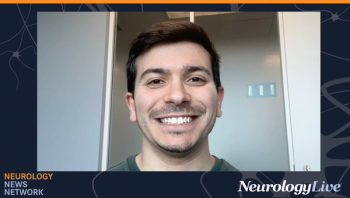
ALS Agent DNL788 Fails Primary End Point in Phase 2 HIMALAYA Study
After a positive phase 1 study, DNL788, an RIPK1 inhibitor, failed to distinguish itself from placebo in HIMALAYA.
According to an SEC filing report from Denali Therapeutics, the company’s investigational agent DNL788 failed to meet its primary end point of change on ALS Functional Rating Scale-Revised (ALSFRS-R) in the phase 2 HIMALAYA trial (NCT05237284) of patients with amyotrophic lateral sclerosis (ALS). The company plans to present the detailed efficacy and safety results of the study at a future scientific forum.1
The 2-part study used change in ALSFRS-R total score at week 24, as well as the combined assessment of the function and survival (CAFS) score at week 52, as the coprimary outcome measures. In the trial, patients first underwent a double-blind period where they received either DNL788 or placebo, followed second by an open-label placebo-switched period that continued until week 106 for those who successfully completed the first portion. The randomization was stratified by study site geographic region, bulbar vs other areas of disease onset, as well as exposure to riluzole (Rilutek; Sanofi), edaravone (Radicava; MT Pharma), and AMX0035 (Relyrvio; Amylyx).
Receptor-interacting serine/threonine protein kinase 1 (RIPK1) is an intracellular protein critically involved in multiple inflammatory pathways and cell death pathways, including apoptosis and necroptosis. DNL788 is a selective, small-molecule, orally bioavailable, brain penetrant, reversible inhibitor of RIPK1 with potent in vitro inhibition of RIPK1 activity, with a 50% inhibitory concentration of 3.16 nM in human PBMCs and 1.6 nM in induced pluripotent stem cell-derived microglia. Overall, targeting RIPK1 has been considered an attractive opportunity for chronic inflammatory central nervous system diseases.
HIMALAYA included more than 15 secondary measures as well, including CAFS score, slow vital capacity (SVC), muscle strength measured by handheld dynamometry, change in ALS Assessment Questionnaire, serum neurofilament light chain, and the number of patients with treatment-emergent adverse events (TEAEs) and serious AEs. The trial featured only those with less than 2 years since ALS onset, an SVC at least 60% of the predicted value, and a body weight no less than 45 kg at the screening visit.
In a
For the single-ascending dose and multiple ascending dose cohorts, mean plasma half-lives ranged between 6-8 hours and 7-9 hours, respectively. Investigators noted that the mean cerebrospinal fluid-to-unbound plasma concentration ratio suggests high CNS-penetrance. Across all DNL788 groups, target engagement was reached, reflected by maximum median inhibition of phosphorylated-Ser166-RIPK1 levels. Notably, patients showed no meaningful changes in hematology, chemistry, vital signs, or electrocardiogram parameters.
In its announcement, Sanofi noted that it will continue to conduct the K2 phase 2 study (NCT05630547) of DNL788 in patients with multiple sclerosis (MS). The double-blind study is expected to include 168 individuals with relapsing-remitting MS, secondary progressive MS, or primary progressive MS, who will undergo a 4-week screening period, followed by a 48-week double-blind treatment period and a 48-week open-label extension. The study assesses change on neurofilament light levels as the primary end point, with secondary outcomes that include the number of gadolinium-enhancing T1 and T2 hypertense lesions.
REFERENCES
1. United States Securities and Exchange Commission form 8-K. Denali Therapeutics. February 16, 2024. Accessed February 21, 2024. https://investors.denalitherapeutics.com/static-files/163b7af5-35a1-472f-855f-830144f907fb
2. Denali Therapeutics Announces Achievement of RIPK1 Milestone for Phase 2 Clinical Trial Initiation in ALS by Sanofi. News release. Denali Therapeutics. May 2, 2022. Accessed February 21, 2024 https://www.globenewswire.com/news-release/2022/05/02/2433539/0/en/Denali-Therapeutics-Announces-Achievement-of-RIPK1-Milestone-for-Phase-2-Clinical-Trial-Initiation-in-ALS-by-Sanofi.html
3. Denali Therapeutics announces achievement of RIPK1 milestone for phase 2 clinical trial initiation in multiple sclerosis by Sanofi. News release. Denali Therapeutics. January 25, 2023. Accessed February 21, 2024. https://www.globenewswire.com/news-release/2023/01/25/2595146/0/en/Denali-Therapeutics-Announces-Achievement-of-RIPK1-Milestone-for-Phase-2-Clinical-Trial-Initiation-in-Multiple-Sclerosis-by-Sanofi.html
Newsletter
Keep your finger on the pulse of neurology—subscribe to NeurologyLive for expert interviews, new data, and breakthrough treatment updates.


























